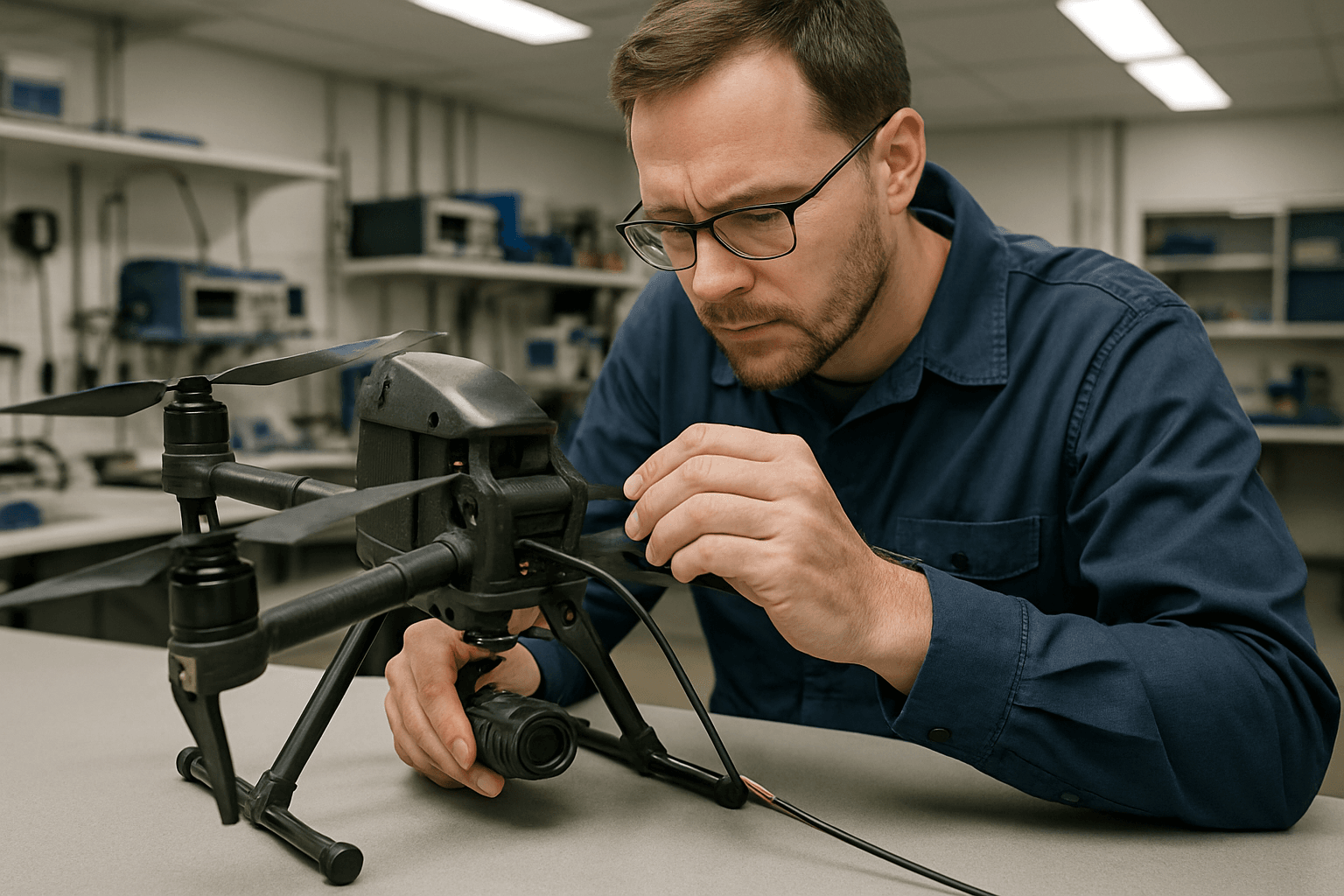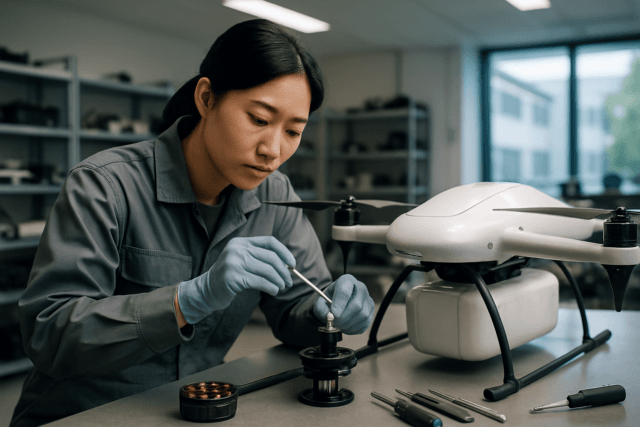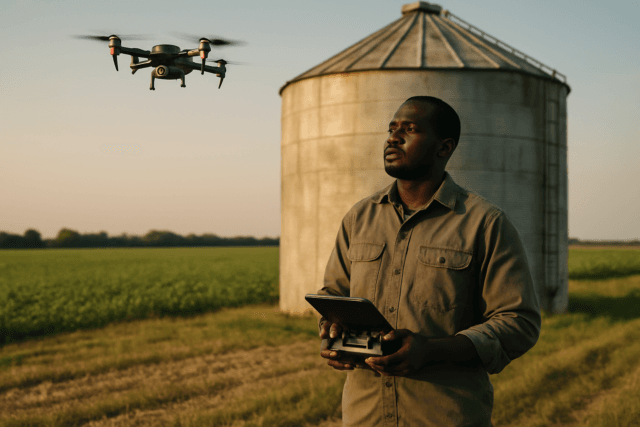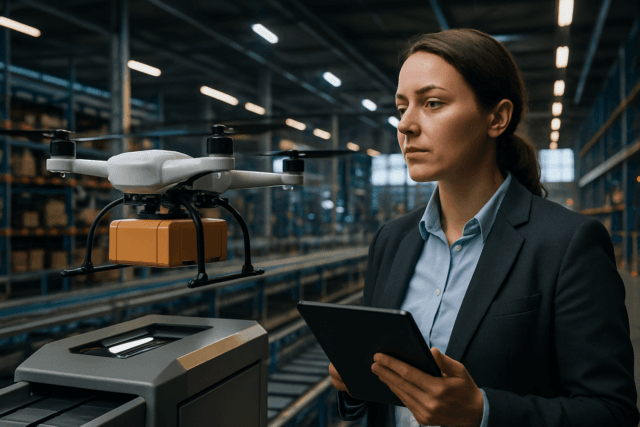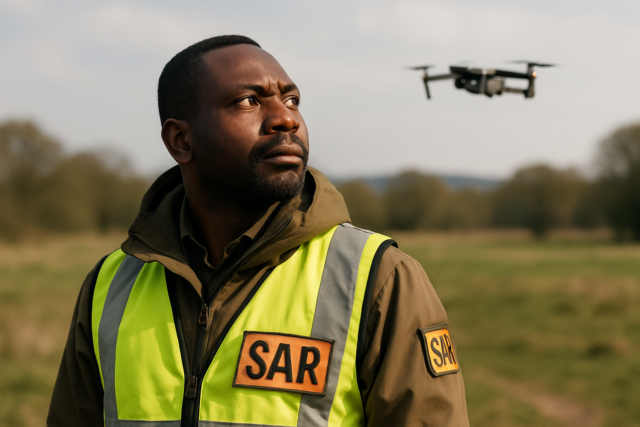Drones have become increasingly prevalent in both commercial and recreational sectors, transforming industries and offering unprecedented capabilities for aerial operations. However, this proliferation has also introduced significant security vulnerabilities, making drones attractive targets for malicious actors. As drones evolve, so do the cybersecurity risks associated with them, threatening data privacy, operational integrity, and public safety. This article explores the multifaceted landscape of drone security vulnerabilities, providing insights into the risks and countermeasures essential for protecting these increasingly ubiquitous devices.
The Expanding World of Drones and the Emerging Threat Landscape
Drones are no longer limited to hobbyists; they play critical roles in various sectors, including infrastructure inspection, delivery services, surveillance, and even military operations. This widespread adoption has made them a prime target for cyberattacks, as highlighted during the Cybersecurity Symposium. The potential for malicious exploitation of drones and their data is an escalating concern that cannot be ignored.
As drones capture, store, and transmit sensitive data, such as Personally Identifiable Information (PII), addresses, and financial details, the need for robust cybersecurity measures becomes paramount. The absence of adequate security strategies can expose drones to various risks, mirroring those faced by other connected technologies.
Common Drone Security Vulnerabilities
Drones, like any other computer system, are vulnerable to a range of security threats. Understanding these vulnerabilities is the first step in developing effective countermeasures. Here are some of the most common drone security vulnerabilities:
1. Insecure Communication
Drones communicate wirelessly with controllers, often over unencrypted channels. This makes them susceptible to interception and modification of sensitive information, such as video feeds and control commands.
- Risk: Unauthorized access to drone controls or interception of sensitive data.
- Mitigation: Implement end-to-end encryption for data transmission, using secure protocols like TLS (Transport Layer Security).
2. Weak Authentication and Authorization
Inadequate authentication mechanisms can allow unauthorized individuals to access drone controls or sensitive data. Default or easily guessable passwords are a common issue.
- Risk: Unauthorized control of the drone, data breaches.
- Mitigation: Employ strong, multi-factor authentication and role-based access control systems. Regularly update passwords and avoid default credentials.
3. Firmware and Software Vulnerabilities
Vulnerabilities in the drone’s firmware or software can be exploited to gain unauthorized access or control. Outdated software and unpatched vulnerabilities are common entry points for attackers.
- Risk: Complete compromise of the drone, malware injection.
- Mitigation: Regularly update firmware and software, implement secure development practices, and conduct vulnerability scanning.
4. Insufficient Network Security
Drones often utilize network services like Wi-Fi and Bluetooth, which, if not properly secured, can lead to unauthorized access.
- Risk: Unauthorized access to the drone via network vulnerabilities.
- Mitigation: Use strong network encryption, secure network configurations, and disable unnecessary services.
5. GPS Spoofing
Attackers can use fake GPS signals to mislead a drone, causing it to believe it is in a different location.
- Risk: Loss of control over the drone, potential for it to be directed to unintended locations.
- Mitigation: Implement GPS spoofing detection mechanisms and use encrypted GPS signals.
6. Signal Jamming
Malicious actors can disrupt a drone’s control or GPS signals, causing it to lose connection and potentially crash.
- Risk: Loss of control, potential damage or theft of the drone.
- Mitigation: Implement redundant communication systems and anti-jamming technology.
7. Inadequate Personal Data Protection
Drones often collect personal data without proper safeguards or consent, raising privacy concerns.
- Risk: Violation of privacy norms, non-compliance with regulations such as GDPR.
- Mitigation: Implement data protection measures, respect privacy norms, and ensure compliance with relevant regulations.
8. Lack of Secure Update Mechanisms
Insecure update processes can introduce malware or unauthorized modifications, compromising the drone’s security.
- Risk: Malware injection, unauthorized modifications.
- Mitigation: Use signed firmware and software updates, secure update protocols, and integrity verification.
9. Third-Party Component Vulnerabilities
Drones often rely on third-party components (e.g., libraries, modules) that may contain vulnerabilities.
- Risk: Compromised drone security due to vulnerable third-party components.
- Mitigation: Carefully vet third-party components, keep them up to date, and monitor for disclosed vulnerabilities.
10. Physical Security Weaknesses
Physical tampering with the drone or its components can provide unauthorized access or control.
- Risk: Unauthorized physical access to the drone’s systems.
- Mitigation: Implement tamper detection and prevention mechanisms, secure hardware design, and access controls.
Real-World Examples of Drone Hacking
The threat of drone hacking is not merely theoretical. Several real-world examples demonstrate the potential for malicious actors to exploit drone vulnerabilities:
- Corporate Wi-Fi Attack: In 2022, a U.S. financial company discovered modified DJI drones on its roof, equipped with a “Wi-Fi Pineapple” device to intercept network traffic and steal employee credentials.
- GPS Spoofing Demonstration: Researchers at the University of Texas at Austin successfully “hacked” a drone by spoofing its GPS system, redirecting it from its intended course.
- DJI Vulnerability: Check Point Research identified a vulnerability in DJI’s user identification process that could have allowed attackers to access user accounts.
These examples highlight the importance of proactive cybersecurity measures to protect drones from potential attacks.
UK Specific Concerns
In the UK, concerns are mounting over the use of drones, particularly Chinese-manufactured drones, at critical infrastructure sites. Despite warnings from the National Protective Security Authority (NPSA), organizations such as National Grid and Thames Water have been using DJI drones to inspect their facilities. This raises concerns about potential data sharing with foreign governments and the security of sensitive infrastructure data.
The UK’s response to drone threats has largely been intelligence-led, focusing on monitoring intent and preventing attacks before they occur. However, there is a growing need for a national drone security strategy that includes stronger enforcement, better detection, and clearer authority for police to act in real-time.
Best Practices for Drone Security
To mitigate the risks associated with drone vulnerabilities, it is essential to implement robust security measures. Here are some best practices for drone security:
1. Regular Firmware and Software Updates
Keep drone firmware and software up to date with the latest security patches. Manufacturers often release updates to address newly discovered vulnerabilities.
2. Strong Passwords
Use strong, unique passwords for drone apps, controllers, and Wi-Fi networks. Avoid default passwords and change them regularly.
3. Encryption
Take advantage of encryption features offered by drone manufacturers to protect data transmitted between the drone and the controller.
4. Secure Data Storage
Ensure that any sensitive data collected by the drone is stored securely, both on the device and in the cloud. Consider using password protection and encryption for onboard data storage.
5. Network Security
Secure the Wi-Fi network used to control the drone with a strong password and encryption. Limit the number of devices that can connect to the network.
6. VPN Usage
Use a Virtual Private Network (VPN) to encrypt the internet connection and protect against unauthorized access to communications.
7. Geofencing
Implement geofencing to create virtual boundaries around sensitive locations, preventing drones from entering restricted areas.
8. Physical Security
Keep drones and ground control systems physically secure to prevent tampering or theft.
9. Logging and Monitoring
Implement comprehensive logging and real-time monitoring systems to detect suspicious activities and potential security breaches.
10. Awareness Training
Educate drone operators about the risks of drone hacking and the importance of following security best practices.
11. Implement a “Return to Home” (RTH) Mode
Ensure your drone has a “Return to Home” (RTH) mode. Once you have set the home point, this will enable the drone to return if it loses signal, if your signal is jammed, or if the battery becomes depleted.
12. Subscribe to a Virtual Private Network (VPN)
Subscribe to a Virtual Private Network (VPN) to stop hackers from accessing your communications when you’re connected to the internet. A VPN acts as a secure gateway to the internet and encrypts your connection, so a hacker can’t get in.
13. Set a Limit on Connecting Devices
Set a limit of one for the number of devices that can connect to your base station. That will prevent a hacker hijacking your signal to control other devices.
Regulatory Measures and Compliance
In the UK, drone operations are governed by regulations designed to protect public safety and privacy. It is illegal to fly a drone within 50 metres of people, vehicles, buildings, or structures without permission. Drones with cameras are subject to additional restrictions, including a ban on flying over or within 150 metres of densely populated areas or large gatherings.
Furthermore, drones are prohibited from flying near sensitive locations such as prisons and airports, where strict no-fly zones are enforced. Certain drones require the operator to hold a license, ensuring that their use is regulated and monitored.
Compliance with these regulations is essential for ensuring the safe and responsible use of drones and avoiding potential legal consequences.
The Future of Drone Security
As drone technology continues to advance, new security challenges will inevitably emerge. The integration of AI and IoT into drones, for example, introduces new vulnerabilities that hackers can exploit.
To stay ahead of these evolving threats, ongoing research and development of drone security technologies are essential. This includes the development of more robust encryption methods, advanced intrusion detection systems, and AI-powered threat analysis tools.
Collaboration between drone manufacturers, cybersecurity experts, and regulatory bodies is also crucial for establishing industry-wide security standards and best practices.
Conclusion
Drones offer tremendous potential across various sectors, but their increasing use also introduces significant security vulnerabilities. By understanding these vulnerabilities and implementing appropriate countermeasures, it is possible to mitigate the risks and ensure the safe and responsible use of drones.
In the UK, a national drone security strategy is needed to address the emerging threats and protect critical infrastructure. This strategy should include stronger enforcement, better detection, and clearer authority for law enforcement to act in real-time.
As drone technology continues to evolve, ongoing vigilance and proactive security measures are essential for protecting these increasingly ubiquitous devices from cyberattacks. By prioritizing drone security, we can harness the benefits of this technology while minimizing the risks.

